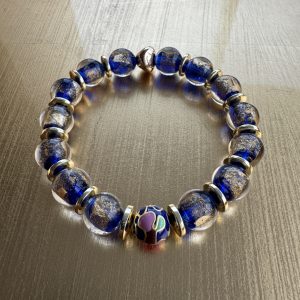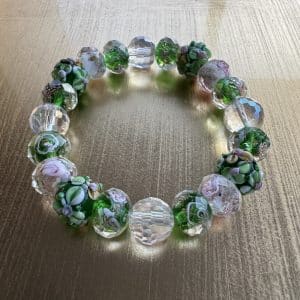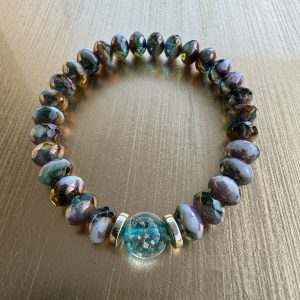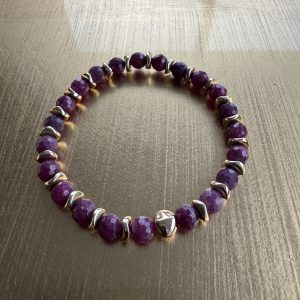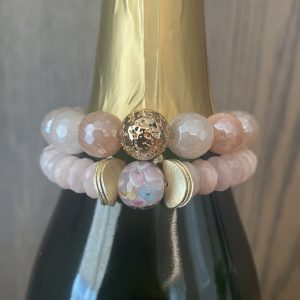Jewelry has always been more than just adornment; it is a reflection of culture, status, and personal expression. Among the various forms of jewelry, bracelets hold a significant place in history, serving as symbols of power, love, and protection. This blog explores the history of crafted jewelry through the lens of bracelet history, tracing their evolution from ancient jewelry to the modern styles that captivate us today.
The Origins of Bracelets in Ancient Cultures
Bracelets have a rich and varied history, dating back thousands of years. In ancient civilizations like Mesopotamia, Egypt, and Greece, bracelets were crafted from materials like gold, silver, and semi-precious stones. These ancient jewelry pieces were often worn as symbols of status, protection, and religious significance. The bracelet history of these cultures reveals how these adornments played a crucial role in social and spiritual life. The early use of bracelets highlights the human desire to express identity, spirituality, and personal style through crafted jewelry that holds deep meaning.
Bracelets in Ancient Egypt, Greece, and Rome
In ancient jewelry traditions, Egypt, Greece, and Rome stand out for their intricate and symbolic designs. Egyptian bracelets often featured motifs of scarabs and lotus flowers, symbolizing rebirth and eternal life. In Greece, bracelets were worn by both men and women, often designed with intricate patterns and mythological symbols. Roman bracelet history showcases the use of gold and gemstones, with designs that emphasized wealth and power. These ancient jewelry pieces were not just adornments but also symbols of status, beliefs, and cultural identity, making bracelet history a fascinating study of art, society, and tradition.
The Evolution of Bracelet Designs Over Centuries
As centuries passed, the design of bracelets evolved, reflecting the changing tastes and influences of different eras. The history of crafted jewelry saw a significant transformation during the Middle Ages, where bracelets became more elaborate, often featuring religious symbols and intricate metalwork. This period in bracelet history also saw the introduction of new techniques and materials, expanding the possibilities for design and personalization. The evolution of bracelet styles reflects broader cultural shifts and technological advancements, making bracelet history a mirror of human innovation and creativity.
From Medieval to Renaissance Eras
During the Medieval era, bracelets were often simple and made of metals like gold and silver. However, the Renaissance period brought a renewed interest in art and aesthetics, leading to more elaborate designs. This era in bracelet history saw the incorporation of precious stones and intricate metalwork, blending artistic expression with personal adornment. The history of crafted jewelry during the Renaissance highlights the revival of classical themes and the exploration of new artistic possibilities. Bracelets became more than just accessories; they were expressions of the wearer’s taste, status, and connection to the cultural and intellectual currents of the time.
The Influence of the Victorian Era
The Victorian era marked a significant shift in bracelet history. This period was characterized by sentimentality and symbolism, with bracelets often serving as tokens of love, mourning, and memory. Designs became more intricate, with the use of heart motifs, floral patterns, and cameos becoming popular. The history of crafted jewelry during this time reflects the deep emotional significance attached to these pieces. Bracelets from the Victorian era often carried hidden messages or symbols, making them cherished keepsakes that connected the wearer to loved ones and significant life events.
Modern Interpretations of Historical Bracelet Designs
Today, the history of crafted jewelry continues to inspire modern designers who blend historical elements with contemporary styles. Bracelets that echo ancient jewelry designs are often reimagined with modern materials and techniques, creating pieces that are both timeless and trendy. This blending of old and new in bracelet history reflects a desire to connect with the past while embracing the innovations of the present. Bracelets today are as much about personal expression as they are about honoring the rich traditions of crafted jewelry. The interplay between tradition and modernity in bracelet styles 2024 offers endless possibilities for creativity and self-expression.
Blending the Old with the New
Modern jewelry design often draws inspiration from the past, blending traditional craftsmanship with contemporary aesthetics. Bracelet history shows us that many of today’s popular bracelet styles 2024 are rooted in ancient designs. Whether it’s the revival of boho bracelets inspired by ancient tribal jewelry or the sleek lines of minimalist bracelets that harken back to simpler times, the fusion of old and new remains a constant trend in the jewelry world. This blending of historical and modern influences in bracelet history allows designers to create pieces that are both meaningful and fashionable, resonating with a wide range of wearers who appreciate the depth and beauty of crafted jewelry.
The Revival of Vintage Styles
In recent years, there has been a resurgence of interest in vintage and retro styles. This trend in bracelet history has seen the return of designs from the Victorian and Art Deco eras, with a modern twist. Trending bracelets today often feature elements like intricate filigree, mixed metals, and bold gemstone settings, all of which draw from historical influences. The revival of vintage styles in bracelet history reflects a longing for the elegance, craftsmanship, and unique character of the past, combined with the desire to make these timeless designs relevant for today’s fashion-forward individuals. The continued popularity of vintage-inspired bracelets demonstrates the enduring appeal of crafted jewelry that tells a story and connects us to the rich tapestry of history.
Conclusion: The Timelessness of Crafted Bracelets
The history of crafted jewelry reveals that bracelets are not just fashion statements; they are timeless pieces that carry the weight of history, culture, and personal meaning. From the ancient jewelry of Egypt and Rome to the bracelet styles 2024 that continue to capture our imagination, bracelets remain a beloved accessory that transcends time and trends. As we wear these pieces, we connect with the past, while also making our own mark on the rich tapestry of bracelet history. The enduring appeal of bracelets lies in their ability to adapt to changing times while retaining their symbolic significance and artistic beauty.
FAQs
Q1: What materials were used in ancient bracelets?
Ans: Ancient jewelry often featured materials like gold, silver, copper, and semi-precious stones. Each material had its own symbolic meaning and was chosen for its spiritual or protective properties.
Q2: How did the Victorian era influence bracelet design?
Ans:: The Victorian era brought a focus on sentimentality and symbolism in bracelet history. Designs often included motifs like hearts, flowers, and cameos, reflecting love, mourning, and memory.
Q3: What are some modern trends inspired by historical bracelet designs?
Ans:: Modern trends like boho bracelets and minimalist bracelets often draw inspiration from ancient jewelry and vintage styles, blending traditional elements with contemporary aesthetics.

